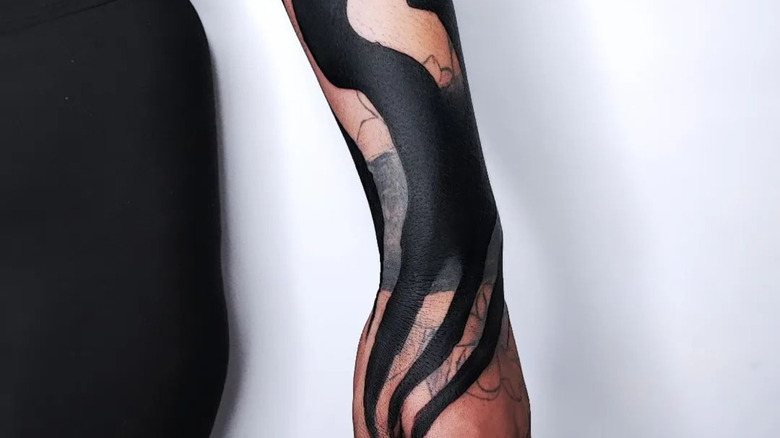Blackout Tattoos: Why This Style Is A Bigger Commitment Than Other Ink
Blackout tattoos have been gaining popularity in recent years — and for good reason. These striking tattoos can be big statement pieces without requiring much detail. Blackout tattoos require taking a large area of the body and covering it with solid black ink. They could be great for anyone looking to cover up a scar or an unwanted tattoo or who just wants to stand out in a crowd. The pain level depends on the person, and the care instructions are like those for any tattoo — but there is more to consider.
Blackout tattoos, like other tattoos, come with some risk. Covering a large area of the body requires saturating the skin with ink, which could mask serious issues later. Due to the permanent nature of tattoos, it's important to weigh their long-term pros and cons, but with blackout tattoos, some issues need to be addressed before going under the needle.
It will take a long time to get the tattoo
At first glance, blackout tattoos seem like a simple option since they only require covering the skin with ink. However, this could be a long and daunting process. Mickey Malani, co-owner of the Body Canvas, explains to Mensxp that the process can take at least six hours and will typically require multiple sessions.
"You're getting something so bold and solid on your skin, so it's definitely one of the most difficult jobs — not just for you as an enthusiast but also for me as an artist," he told the publication. He goes on to explain that the reason this is so difficult is that it requires a high level of meticulousness to get the desired effect. It's also important to note that the skin is being rendered so much that the ink may not be fully absorbed, lessening saturation and affecting the tattoo's appearance.
Removal is a rough journey
In a few years, if the blackout tattoo is no longer the right fit, the removal process will be complicated. According to Dr. Roberta Del Campo, a Miami dermatologist, laser removal is very intense and requires exploding the pigment underneath the skin to get rid of the tattoo. The process can be painful, leaving the skin swollen and red for at least a week.
Laser tattoo removal normally requires six to 10 sessions to complete. However, because of the amount of ink used, blackout tattoos can require many more sessions. This is due to the size of the tattoo, which often leads to extended sessions to get the ink completely removed. This will also require a hefty investment. The American Society for Aesthetic Plastic Surgery states that the darkness and complexity of the tattoo usually affect the cost, often making the removal process more expensive than the tattoo itself.


